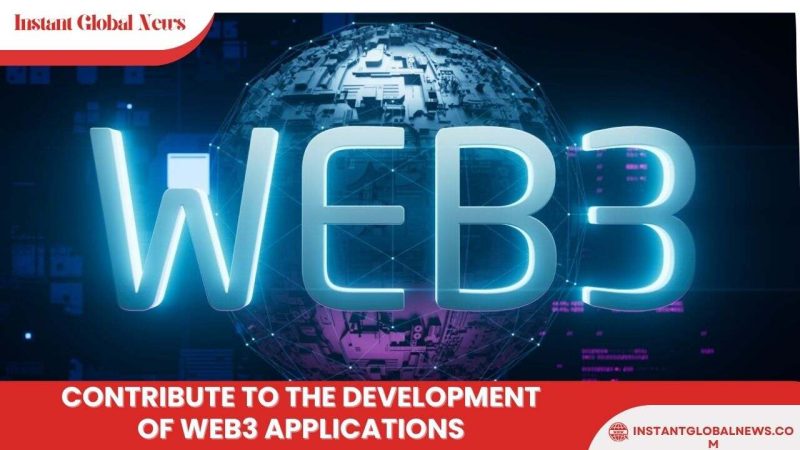Blockchain Layer 1 serves as the foundational technology that underpins decentralized networks, enabling secure and transparent transactions without the need for intermediaries. As the first layer of the blockchain stack, it is responsible for the core functions of transaction validation, consensus, and data storage. Prominent examples of Layer 1 blockchains include Bitcoin, Ethereum, and Solana, which are used to power a wide range of applications, from digital currencies to decentralized applications (dApps).
The significance of Blockchain Layer 1 lies not just in its technological innovations but in its potential to revolutionize a broad spectrum of industries and everyday practices. Unlike traditional centralized systems, where a single entity controls the data and transactions, Blockchain Layer 1 operates on a decentralized model, ensuring that no single party has authority over the network. This shift towards decentralization has profound implications for sectors like finance, healthcare, supply chains, and governance, where trust, transparency, and security are paramount.
As the foundational layer of the blockchain ecosystem, Blockchain Layer 1 is also at the heart of the broader blockchain movement, driving innovations in areas such as digital currencies, decentralized finance (DeFi), and smart contracts. By providing a secure and transparent platform for building decentralized applications, it opens up new opportunities for businesses, governments, and individuals to engage in more efficient, trustless, and autonomous transactions.
In this outline, we will explore how Blockchain Layer 1 works, the real-world applications it enables, and how its transformative potential is impacting industries around the globe. From reshaping financial systems to streamlining supply chains, Blockchain Layer 1 is ushering in a new era of technological advancement with far-reaching implications for the global economy.
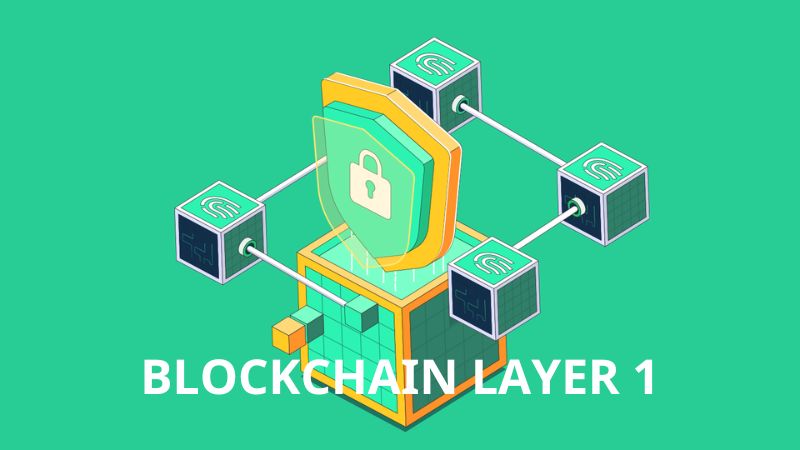
Understanding Blockchain Layer 1: Core Technology and Functionality
Blockchain Layer 1 is the foundation of the blockchain ecosystem, consisting of the core protocols and mechanisms that allow decentralized networks to function effectively. At its core, Blockchain Layer 1 is responsible for handling the following critical functions:
- Transaction Validation: Blockchain Layer 1 ensures that transactions are validated in a secure and reliable manner. When a user initiates a transaction, it is broadcasted to the network, and nodes (participants) validate the transaction according to predefined consensus rules. This process ensures that transactions are legitimate, reducing the risk of fraud or double-spending.
- Consensus Mechanism: The consensus mechanism is the process by which the nodes in the network agree on the validity of a transaction and the order in which it is added to the blockchain. Common consensus mechanisms include Proof of Work (PoW) and Proof of Stake (PoS). In PoW, miners compete to solve complex mathematical puzzles, while in PoS, validators are selected based on the amount of cryptocurrency they stake.
- Immutable Ledger: Blockchain Layer 1 maintains an immutable, distributed ledger of all transactions that have ever taken place on the network. Each block contains a timestamp and a cryptographic hash that links it to the previous block, creating an irreversible chain of data. This immutable nature of blockchain ensures that data cannot be altered or tampered with, providing a secure foundation for various applications.
- Smart Contracts: While traditionally associated with Layer 2, the concept of smart contracts is also implemented on certain Layer 1 blockchains, such as Ethereum. These self-executing contracts allow for automated, trustless agreements to be made directly between parties without the need for intermediaries. Smart contracts are essential for enabling decentralized applications (dApps) and decentralized finance (DeFi) platforms.
Blockchain Layer 1 is critical for establishing the security, transparency, and decentralization needed to power a wide range of applications. Its decentralized nature reduces the reliance on central authorities, creating an environment where participants can interact and transact directly with each other. This technology provides trust through cryptography and consensus, ensuring that all network participants are working from the same, immutable data set.
By enabling secure and transparent transactions, Blockchain Layer 1 has laid the foundation for the development of decentralized applications and financial services, transforming not just the way we exchange value but also how we interact, communicate, and collaborate in the digital age. Its core functionalities are essential for many real-world applications that go beyond financial transactions, influencing industries such as supply chain management, healthcare, voting systems, and more.

Real-World Applications of Blockchain Layer 1
Blockchain Layer 1 is not just a theoretical concept; it has real-world applications that are changing industries and revolutionizing how businesses and individuals interact. The core capabilities of Blockchain Layer 1, such as decentralization, transparency, security, and immutability, enable it to be applied across various sectors. Below are some of the key industries where Blockchain Layer 1 is making an impact:
Decentralized Finance (DeFi)
One of the most prominent applications of Blockchain Layer 1 is in the decentralized finance (DeFi) space. DeFi refers to a system where traditional financial services, such as lending, borrowing, trading, and asset management, are offered without the need for intermediaries like banks. Using blockchain’s decentralized infrastructure, DeFi platforms operate on Layer 1 blockchains such as Ethereum, providing users with access to financial services globally, 24/7.
Smart contracts deployed on Layer 1 blockchains automatically execute agreements based on predefined conditions, reducing the need for manual processing and intermediaries. This leads to lower transaction costs, faster processing times, and greater accessibility to financial products. DeFi is especially significant in countries where traditional financial institutions are either absent or inefficient, promoting financial inclusion.
Supply Chain and Logistics
Blockchain Layer 1 is transforming supply chain management by providing a transparent, secure, and tamper-proof record of the journey of goods from origin to consumer. Companies can track products at every stage of the supply chain, ensuring authenticity, quality, and compliance with regulations. Blockchain-based systems can record each transaction (such as the movement or sale of goods) on a decentralized ledger, providing a single, immutable source of truth.
For example, in the food industry, Blockchain Layer 1 can ensure that food products are traceable from farm to table, helping reduce food fraud, improve safety standards, and enhance consumer confidence. In logistics, blockchain enables real-time tracking, reducing delays and errors, improving inventory management, and optimizing the supply chain.
Healthcare
Blockchain Layer 1 has the potential to revolutionize the healthcare industry by providing secure, decentralized solutions for patient data management, medical record storage, and the sharing of sensitive health information. Healthcare data is typically stored in centralized systems that can be vulnerable to hacking or unauthorized access. Blockchain’s decentralized nature ensures that medical records are encrypted, secure, and only accessible by authorized parties.
Using blockchain, patients can have full control over their own medical data, choosing when and with whom to share it. This also enhances interoperability, as different healthcare systems can securely access and exchange data in real-time. Blockchain in healthcare also has applications for tracking pharmaceuticals, ensuring that medicines are genuine and have not been tampered with.
Voting Systems
Blockchain Layer 1 is also being explored for use in secure, transparent, and tamper-proof voting systems. Traditional voting mechanisms are often criticized for being vulnerable to fraud, errors, and lack of transparency. Blockchain’s immutability and transparency can solve these issues by creating a system where votes are recorded on an immutable ledger and cannot be altered once submitted.
This technology can enable more secure elections, both for government elections and for corporate voting. It also provides a way for remote or online voting systems to operate with greater confidence, as the decentralized nature of blockchain ensures that no central authority can manipulate the voting process.
Digital Identity and Authentication
Another key application of Blockchain Layer 1 is in digital identity management. Traditional identity systems often rely on centralized authorities, such as government agencies or corporations, to validate identity. With blockchain, individuals can own and control their own digital identity, stored securely on a decentralized ledger. This can reduce the risk of identity theft and provide individuals with a secure and verifiable way to prove their identity.
Blockchain can also streamline authentication processes for accessing online services, reducing the need for passwords and centralized databases. This can be applied in various sectors, from banking and healthcare to e-commerce and social media, providing a safer, more efficient way to manage and verify identities.
Intellectual Property and Copyright Protection
Blockchain Layer 1 is also being utilized in the protection of intellectual property (IP). By storing ownership records on a decentralized blockchain, creators and innovators can prove their ownership of original works, such as patents, copyrights, trademarks, and other intellectual assets. This can help prevent piracy and unauthorized use of IP, offering a more secure and transparent method for tracking and verifying ownership.
Additionally, smart contracts can automatically enforce licensing agreements, ensuring that creators receive compensation when their work is used or sold. This offers a more efficient, cost-effective way to manage IP rights and reduce the risk of disputes
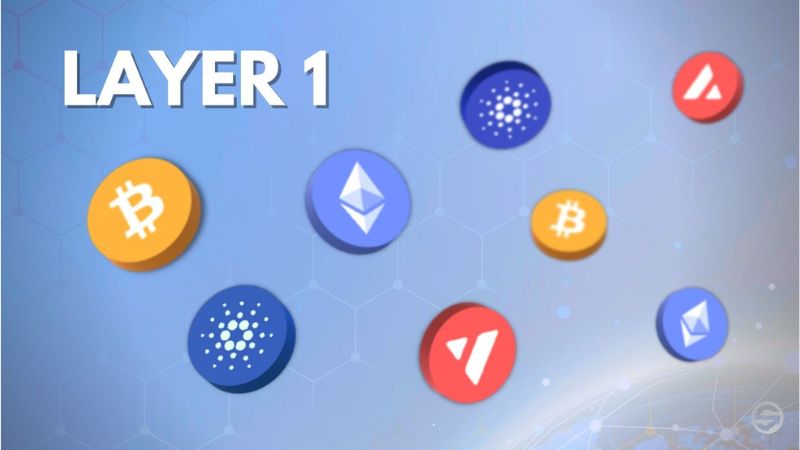
Challenges and Limitations of Blockchain Layer 1
Despite its transformative potential, Blockchain Layer 1 faces several challenges and limitations that need to be addressed for broader adoption and more widespread application. These challenges stem from both the technical aspects of the technology as well as the broader economic and regulatory environment. Below, we explore some of the key challenges facing Blockchain Layer 1 today.
Scalability Issues
One of the most significant challenges that Blockchain Layer 1 faces is scalability. As the number of transactions on a blockchain network increases, so too does the need for greater computational power and storage. Blockchain networks like Bitcoin and Ethereum, which are among the most widely used Layer 1 blockchains, often struggle with transaction throughput limitations. For example, Bitcoin can only process approximately 7 transactions per second, while Ethereum can handle about 30 transactions per second.
As the demand for blockchain services grows, this limitation creates bottlenecks, leading to higher transaction fees and slower processing times. Several solutions are being explored to address scalability, such as sharding, layer 2 protocols, and more efficient consensus mechanisms, but scalability remains one of the key obstacles to blockchain adoption at scale.
Energy Consumption
Energy consumption is another major issue, especially for Layer 1 blockchains that use Proof of Work (PoW) as their consensus mechanism, like Bitcoin. The process of mining, which involves solving complex mathematical puzzles, requires a significant amount of computational power and, consequently, energy. This has led to concerns about the environmental impact of blockchain networks, particularly in an era of heightened awareness of climate change and sustainability.
Although alternative consensus mechanisms, such as Proof of Stake (PoS), are being adopted to reduce energy consumption, the transition is slow, and PoW remains the dominant method in many blockchain networks. Therefore, addressing the energy consumption issue remains a priority for the blockchain community as it works toward creating more sustainable systems.
Regulatory Uncertainty
Regulatory uncertainty is a significant barrier to the widespread adoption of Blockchain Layer 1 technologies. Governments and regulatory bodies around the world are still grappling with how to regulate cryptocurrencies, decentralized applications, and other blockchain-based innovations. In many regions, the legal framework for blockchain technology is either unclear or underdeveloped, creating confusion and risk for businesses and investors.
Some governments have adopted strict regulations that prohibit or limit the use of cryptocurrencies, while others are exploring more favorable regulatory approaches. In some cases, blockchain companies may face challenges in obtaining licenses or complying with local laws regarding financial services, data protection, or consumer rights. Clear, consistent, and supportive regulations are essential for the growth of Blockchain Layer 1 technologies.
Security and Privacy Concerns
Although Blockchain Layer 1 is often praised for its security features, it is not immune to vulnerabilities. While the blockchain itself is secure due to its decentralized and immutable nature, the applications built on top of it can be susceptible to security breaches. For example, decentralized applications (dApps) and smart contracts have been targets of hacking and exploits, leading to financial losses and undermining trust in blockchain systems.
Furthermore, privacy concerns arise when dealing with blockchain transactions that are public and transparent. While this transparency is a strength in many use cases, it can also lead to the exposure of sensitive information. Solutions like zero-knowledge proofs are being developed to enhance privacy, but striking the right balance between transparency and privacy remains a challenge for blockchain developers.
Network Congestion
Network congestion occurs when too many transactions are submitted to the blockchain at once, causing delays and higher transaction fees. This is particularly prevalent in popular Layer 1 blockchains like Ethereum, where heavy traffic during times of high demand can result in slow processing speeds and costly transaction fees. For example, during peak times, Ethereum gas fees can spike, making small transactions economically unfeasible.
Various scaling solutions, such as layer 2 networks or sidechains, are being tested to alleviate congestion, but the challenge of balancing network traffic remains an ongoing issue for Layer 1 blockchains.
Lack of Interoperability
Interoperability is another major challenge for Blockchain Layer 1. With the growing number of blockchain platforms and networks, the ability to transfer data and value seamlessly between different blockchains is crucial for the future of decentralized applications and global digital economies. Unfortunately, many Layer 1 blockchains operate in isolation, with limited ability to communicate with other networks.
Efforts to improve interoperability, such as the development of cross-chain protocols and solutions like Polkadot and Cosmos, are promising. However, achieving seamless interaction between disparate blockchains remains an ongoing hurdle that needs to be addressed to fully unlock the potential of blockchain technology.
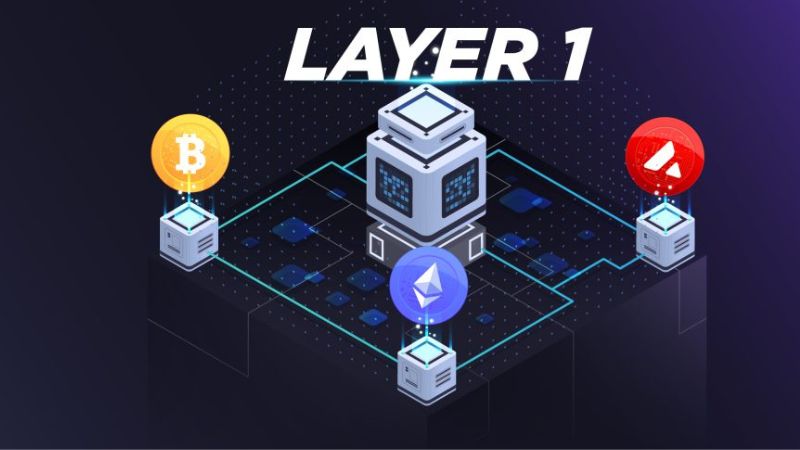
The Future of Blockchain Layer 1: Trends and Developments
As Blockchain Layer 1 continues to mature, several key trends and developments are shaping its future. The technology is advancing rapidly, and new solutions are being developed to address its limitations, while new opportunities are emerging in diverse industries. Here are some of the most prominent trends and developments that will influence Blockchain Layer 1 in the coming years.
Transition to Sustainable Blockchain Networks
The demand for energy-efficient blockchain systems is driving the transition from energy-intensive Proof of Work (PoW) mechanisms to more environmentally friendly alternatives like Proof of Stake (PoS). Ethereum, for example, has already moved to PoS with its Ethereum 2.0 upgrade, drastically reducing energy consumption. Other blockchain networks are following suit, incorporating PoS and other consensus algorithms that require less computational power.
This transition is critical not only for reducing blockchain’s environmental impact but also for promoting the sustainability of blockchain technologies in the long term. With greater emphasis on sustainability and eco-friendly innovations, Blockchain Layer 1 is becoming more aligned with global efforts to combat climate change.
Layer 2 Solutions for Enhanced Scalability
To overcome the scalability issues of Layer 1 blockchains, Layer 2 solutions are being implemented to improve transaction throughput and reduce costs. These solutions operate on top of existing Layer 1 blockchains and provide additional scalability by processing transactions off-chain or through sidechains.
Examples of Layer 2 solutions include the Lightning Network for Bitcoin, which enables fast and low-cost transactions, and Optimistic Rollups for Ethereum, which enhances the blockchain’s capacity to handle more transactions. These innovations allow Layer 1 networks to scale effectively while maintaining security and decentralization.
As adoption increases, the integration of Layer 2 solutions will be crucial in enabling Blockchain Layer 1 to handle the growing demand for decentralized services and applications.
Cross-Chain Interoperability
As more blockchain networks emerge, interoperability between these networks will become increasingly important. Blockchain Layer 1 networks that cannot communicate with one another limit the growth of decentralized applications and services. To address this issue, developers are working on cross-chain interoperability protocols that enable different blockchains to exchange data and assets seamlessly.
Projects like Polkadot, Cosmos, and Avalanche are leading the charge in building ecosystems of interconnected blockchains, allowing for greater flexibility and collaboration between different networks. Interoperability will unlock new possibilities for decentralized finance, supply chain management, and other industries, enabling users to interact across multiple blockchains without friction.
Integration of Blockchain in Traditional Industries
Blockchain Layer 1 is increasingly being adopted by traditional industries to enhance transparency, security, and efficiency. In sectors like finance, healthcare, and supply chain management, companies are realizing the potential of blockchain to streamline processes, reduce fraud, and provide greater transparency.
For example, central banks around the world are exploring the use of blockchain for Central Bank Digital Currencies (CBDCs), which would offer the benefits of blockchain’s security and decentralization within the traditional financial system. In healthcare, blockchain’s immutable ledger ensures the secure and transparent exchange of patient data, while in supply chains, it provides traceability and accountability.
As more industries integrate blockchain into their existing systems, Blockchain Layer 1 will become an essential component of digital transformation across various sectors.
The Rise of Decentralized Autonomous Organizations (DAOs)
Decentralized Autonomous Organizations (DAOs) are gaining traction as a new way of organizing and governing organizations without relying on centralized authority. DAOs are built on Blockchain Layer 1 and are governed by smart contracts, allowing stakeholders to participate in decision-making processes in a transparent, decentralized manner.
The rise of DAOs could disrupt traditional organizational structures, enabling more democratic and efficient ways of managing businesses, non-profits, and even governments. As DAOs become more widespread, Blockchain Layer 1 will play a critical role in facilitating these decentralized organizations, ensuring transparency, fairness, and security in decision-making.
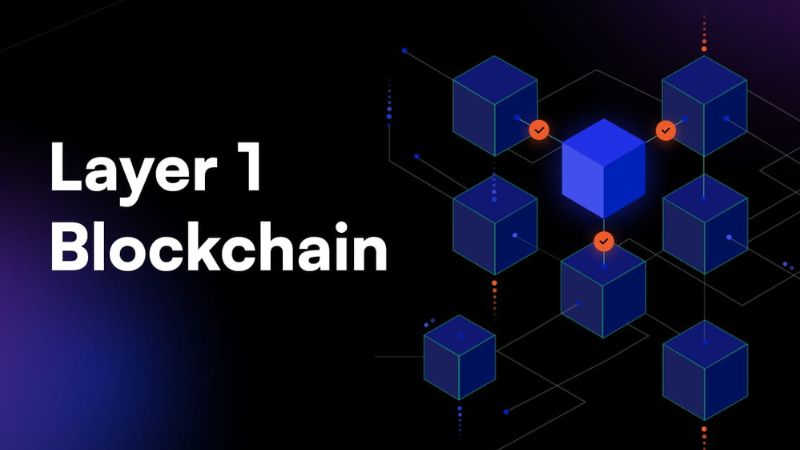
The Impact and Potential of Blockchain Layer 1
Blockchain Layer 1 is rapidly evolving from a groundbreaking technology into a fundamental component of the global digital economy. From its ability to decentralize financial systems and create trustless environments to its potential to disrupt industries such as healthcare, supply chain management, and governance, Blockchain Layer 1 is changing the way we interact with data and digital assets.
Despite the challenges it faces, including scalability, energy consumption, and regulatory uncertainty, Blockchain Layer 1 continues to show immense promise. With ongoing developments in scalability solutions, sustainable consensus mechanisms, and cross-chain interoperability, the future of Blockchain Layer 1 looks brighter than ever.
As it becomes more integrated into various sectors and its core functionalities evolve, Blockchain Layer 1 will not only reshape the way businesses and governments operate but also create new opportunities for individuals, businesses, and institutions to participate in a decentralized, transparent, and secure digital economy. The technology’s ability to provide trust, security, and efficiency will continue to drive its adoption, unlocking new possibilities for real-world applications in a variety of industries.


